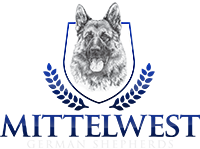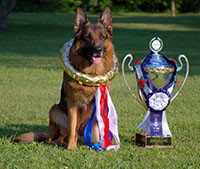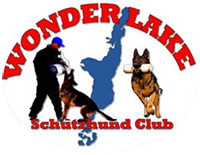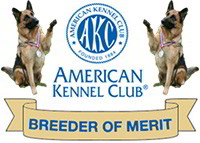A well-trained German Shepherd is a powerful combination of a loyal companion and a reliable guardian. With their natural protective instincts and intelligence, these dogs have been trusted protectors for decades. A German Shepherd can defend your family while remaining a gentle and loving pet when properly trained.
Training a German Shepherd for family protection is a rewarding journey that requires consistency, patience, and the right techniques. You can shape your dog into the perfect protector by understanding their instincts and providing clear guidance.
This article will walk you through every step of this process. From foundational obedience and socialization to advanced techniques and legal considerations, you’ll learn how to train your German Shepherd responsibly and effectively.
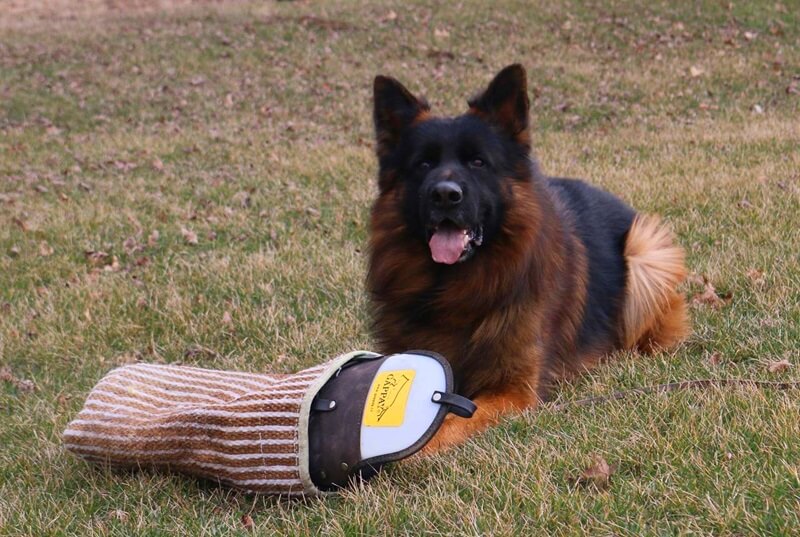
Understanding The German Shepherd’s Protective Instincts
German Shepherds are natural protectors, bred for courage, loyalty, and intelligence. Their instinct to guard is like a spark—powerful but needing direction to shine safely. By understanding these instincts, you can train them effectively while ensuring they remain loving companions.
These protective traits have been carefully cultivated over generations. GSDs are naturally wary of strangers and quick to assess situations. However, this wariness can become unnecessary aggression or fearfulness without training.
Training helps your dog recognize real threats while staying calm in everyday situations. You’ll guide their instincts so they can act decisively when needed but remain approachable. A well-trained German Shepherd is both a reliable guardian and a family-friendly pet.
Understanding your dog’s instincts is the first step in the training process. Next, we’ll assess whether your German Shepherd is ready to take responsibility for protection training.
Assessing Suitability For Protection Training
Not every German Shepherd is suited for protection training. It’s crucial to evaluate your dog’s temperament, health, and readiness before starting. Just as a solid foundation ensures a sturdy home, assessing your dog provides a successful training journey.
Key factors to consider:
- Temperament: Look for a confident and balanced dog. Excessive fearfulness or aggression can hinder progress.
- Health: Ensure your dog is in good physical condition to handle the demands of training.
- Age: Begin light training as early as six months, but save intensive techniques for dogs over a year old.
Observe your dog’s natural behavior in different settings. Do they show curiosity without fear? Are they responsive to your commands? These traits indicate readiness for training.
A professional trainer can also help assess your dog’s suitability. Their expertise ensures you set realistic goals based on your dog’s unique traits.
Once you’ve confirmed your dog is ready, laying the foundation is time. Obedience training is the next essential step in preparing your German Shepherd for protection work.
Foundational Obedience Training
Obedience training is the backbone of any successful protection program. Without a strong foundation in obedience, even the most capable German Shepherd can become unreliable. It’s like building a house—without a solid base, the structure won’t hold. The goal here is simple: ensure your dog listens to and follows your commands without hesitation.
Start with the essentials: “sit,” “stay,” “come,” and “heel.” These basic commands establish control and discipline, which are crucial for advanced training later. Use clear, consistent language for each command, and pair it with positive reinforcement. Reward your German Shepherd with treats, praise, or play whenever they successfully execute a command.
Tips for successful training:
- Consistency is Key: Use the same words and tone every time you issue a command.
- Short Sessions Work Best: Limit training to 10-15 minutes per session to keep your dog engaged.
- Train Daily: Regular practice helps your dog internalize commands faster.
Teaching your dog to “heel” is especially important. This command ensures your dog walks calmly by your side, even in distracting environments. Similarly, the “stay” command fosters patience and control, which is vital for protection work.
Once your dog reliably follows these commands, introduce them to environments with distractions. Training in new settings strengthens their focus and ensures obedience regardless of circumstances. For example, practice “recall” (coming when called) in a secure outdoor area to mimic real-world scenarios.
Mastering these foundational commands makes your German Shepherd more responsive and easier to manage. Obedience training also deepens the bond between you and your dog, building trust and respect. With this groundwork firmly in place, your GSDs will be well-prepared for the socialization and advanced training stages to follow.
Socialization: Building Confidence & Discernment
Socialization is the key to helping your German Shepherd differentiate between ordinary situations and real threats. A well-socialized dog is confident, calm, and discerning—critical traits for protection work. Think of it as teaching a student to identify relevant information in a sea of data.
Expose your dog to various environments, such as parks, busy streets, and family gatherings. The goal is to desensitize them to new experiences while teaching appropriate behavior. Reward calmness and focus, and gently correct excessive reactions.
Steps for effective socialization:
- Introduce new people and animals gradually.
- Visit different locations to expose your dog to unfamiliar sights and sounds.
- Encourage positive interactions with strangers under controlled conditions.
Socialization helps your dog build confidence and recognize when protective instincts are needed. This lays the groundwork for advanced protection training, where instincts are shaped into purposeful responses.
Advanced Protection Training Techniques
Advanced protection training transforms your GSD’s instincts into controlled, purposeful actions. This stage refines their ability to respond to threats with precision and restraint. Imagine shaping a raw diamond into a brilliant gem—it’s about enhancing its best qualities while ensuring safety and reliability.
At the core of this training are commands that teach your dog how to guard effectively without unnecessary aggression. The “guard” command is foundational, signaling your dog to adopt an alert stance while remaining under control. Pair this with the “bark” command to teach them when and how to vocalize warnings. Mastering these skills ensures your German Shepherd intimidates intruders without taking physical action unnecessarily.
Controlled Bite Training
Bite training is a crucial yet sensitive part of protection training. Here, your dog learns to apprehend a target safely and release on command. A professional trainer can use specialized tools like bite sleeves or suits to guide your dog through this process. It’s vital to teach the “release” command, as this ensures they stop immediately when instructed, preventing escalation or injury.
Focus on restraint and control rather than aggression. Your German Shepherd must understand that biting is a last resort, reserved for clear threats. Structured, supervised exercises build confidence in their ability to act decisively and appropriately.
Boundary Guarding
Another advanced skill is boundary guarding. Train your dog to protect designated areas like your home, yard, or a specific zone within your property. Practice scenarios such as someone approaching your front door or simulating a real-life intrusion. This sharpens your German Shepherd’s focus and reinforces their understanding of boundaries.
Practice & Reinforcement
Advanced training should occur in controlled environments with increasing levels of complexity. Introduce distractions, such as unfamiliar people or loud noises, to ensure your dog remains focused. As a good practice, regularly reinforce commands to maintain sharpness and confidence.
These techniques create a reliable protector who can assess and respond to threats while staying manageable in everyday situations. Advanced training safeguards your family and strengthens the bond between you and your dog. With these skills in place, addressing legal and safety measures is vital to ensure proper handling.
Safety Measures & Legal Considerations
Training a protection dog comes with legal and ethical responsibilities. Your German Shepherd is a powerful tool, and it’s your duty to handle them safely and responsibly. Think of it as driving a high-performance car—it’s thrilling but requires skill and caution.
Research local laws regarding protection dogs, including leash regulations and liability insurance. Some jurisdictions have strict rules for owning trained guard dogs. Ensure your dog’s training complies with these requirements to avoid legal issues.
Implement safety protocols, such as keeping your dog leashed or in controlled environments when in public. In addition, you may use warning signs on your property to inform visitors of a protection dog’s presence.
Owning a protection-trained German Shepherd is a privilege. With the right precautions, your dog remains a loyal asset to your family. Next, we’ll explore how to maintain their training and adapt to changing needs.
Maintaining Training & Continuous Development
Training doesn’t stop once your German Shepherd masters protection techniques. Regular reinforcement keeps their skills sharp and reliable. It’s like tuning a musical instrument—constant attention ensures consistent performance.
Schedule weekly practice sessions to revisit commands and drills. Gradually introduce new scenarios to challenge your dog and maintain their focus. Watch for signs of behavioral regression, such as hesitation or overexcitement.
Adapt training as your family’s needs evolve. Whether you move to a new home or welcome new family members, keeping your dog aligned with these changes ensures they remain effective.
Continuous training strengthens the bond between you and your German Shepherd. It also ensures they stay ready to protect your family in any situation. Let’s now discuss how Mittelwest German Shepherds supports you in this journey.
Mittelwest German Shepherds: Your Partner In Protection Training
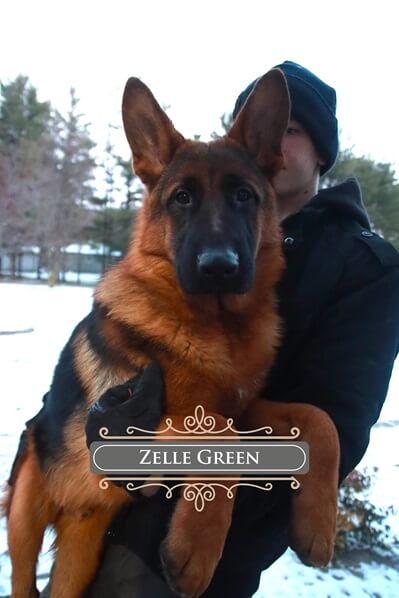
Mittelwest German Shepherds in Wonder Lake, IL, has been a trusted name in German Shepherd breeding and training for over 30 years. We specialize in producing dogs with exceptional temperaments, intelligence, and loyalty—qualities that make them ideal family protectors.
Our German Shepherds come from world-renowned bloodlines, ensuring a strong foundation for protection training. Each puppy is carefully raised and evaluated for temperament, making them well-suited for life as loyal companions and guardians.
In addition to breeding, we offer personalized training programs. Our expert trainers guide your dog through obedience, socialization, and advanced protection techniques. Whether you’re starting with a puppy or refining an adult dog’s skills, we’re here to help.
At Mittelwest, we understand that every family is unique. That’s why we tailor our services to meet your specific needs, ensuring your German Shepherd becomes the protector your family deserves.
Summary
Training a German Shepherd for family protection is a step-by-step process that builds trust, confidence, and effectiveness. From understanding their instincts to mastering advanced skills, each stage prepares your dog to guard responsibly. Regular reinforcement and legal precautions ensure a safe and reliable companion.
Mittelwest German Shepherds is your partner in this journey, offering expert breeding and training to create exceptional protectors. Let us help you unlock the full potential of your German Shepherd, turning them into a loyal guardian and loving family member.

